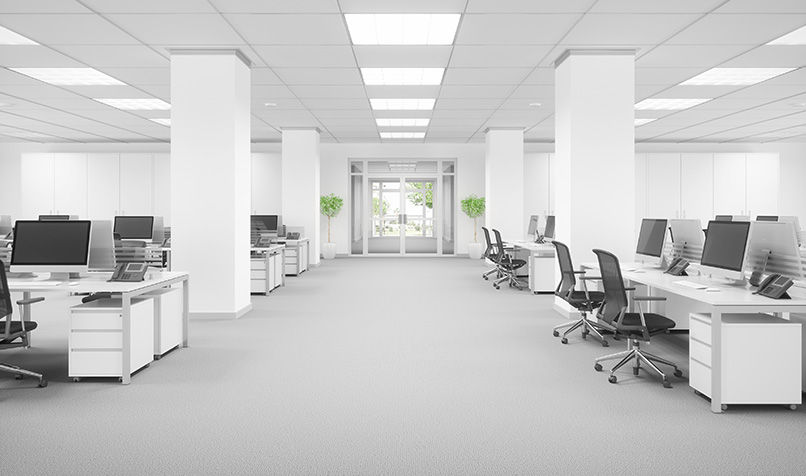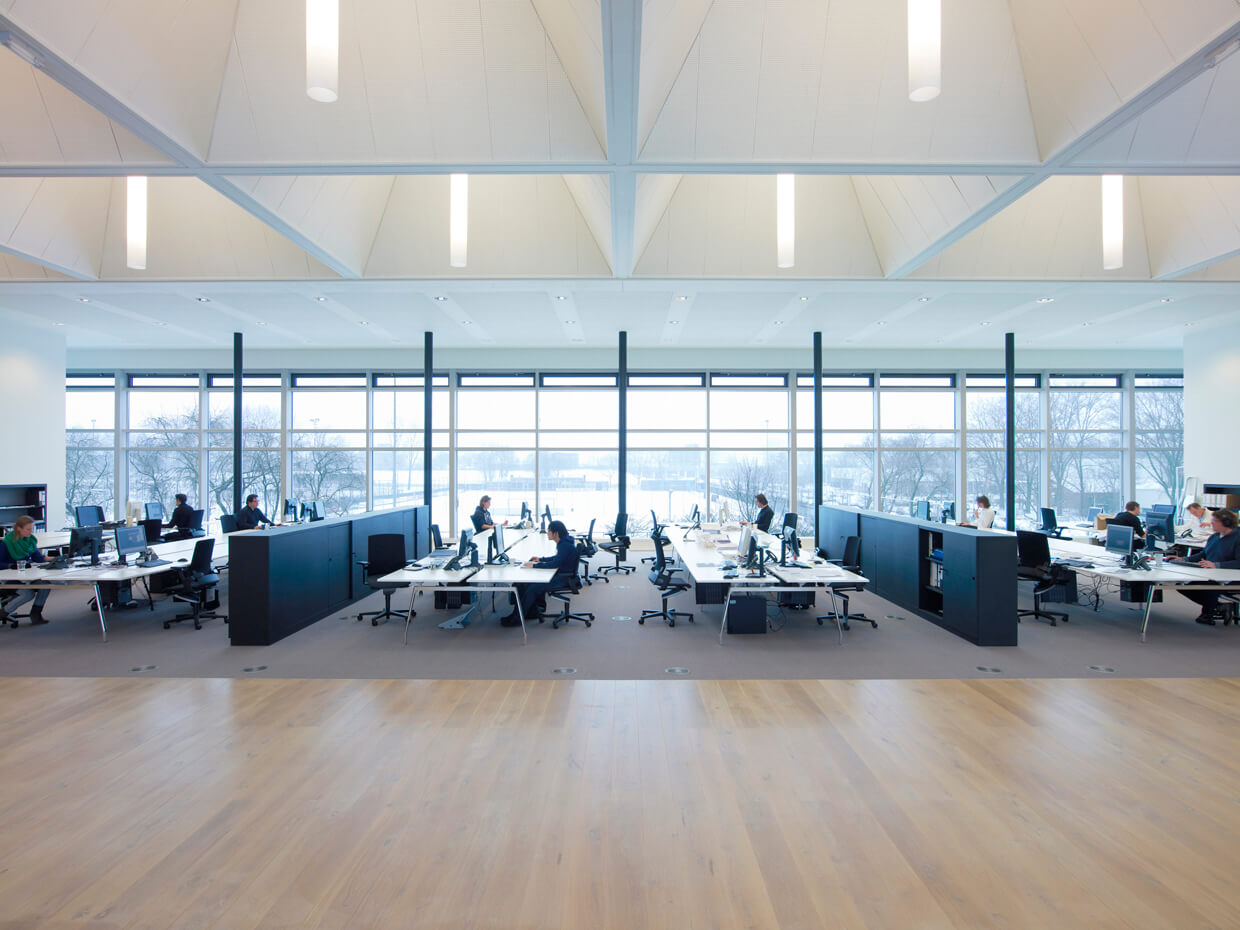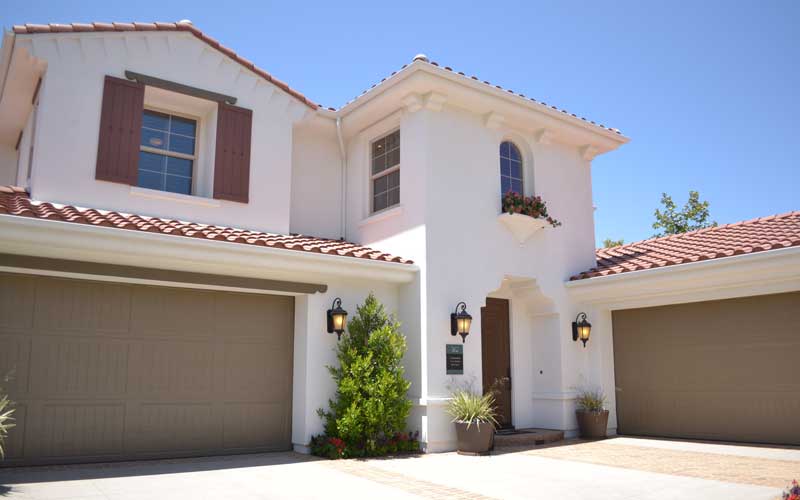There are many important aspects of Interior design that play important roles in a design project. Let us take a look at them one at a time:
1. Space
The first thing you need to take into account, as an interior designer, is Space. Space planning is the foundation of all design ideas. From creating floor plans to designing the living spaces, everything boils down to this one key factor.
It is easy to use 2D modeling to get a basic idea about the space and how you can use various design elements to create a symmetrical balance. However, we recommend using 3D programming to get an accurate idea about the different types of interior space and what you can do with them. 3D rendering and modeling also help spark the visual interest of the client.
Space planning refers to how much open space you want to implement, where you wish to allocate the furniture, and what kind of balance you want in your floor plan.
See also – Best 3D Floor Plan Software

Image credits: intheblack.com
2. Line
The second most important factor in interior design is Line. This design element enables you to implement a theme to the living space.
You can choose to use simple horizontal or vertical lines if the theme of your design ideas is minimalism. However, if you wish to add some flair to the living space, lines can add dramatic finishes to otherwise simple design trends.
You can use lines to align complementary design elements or to create an asymmetrical balance for effect. Lines can be playful or they can be subdued. Either way, they are an important factor of any design project.
3. Forms
In any interior design plan, a form must always follow function. This is to say that forms actually increase the aesthetic value of any interior design trends.
As an interior designer, you can choose to experiment with different forms such as natural forms which include the implementation of natural colors, natural elements, etc. The natural forms are usually requested by homeowners when they wish to prevent the use of negative space in their own homes. Natural forms usually follow a rustic or classic theme because it utilizes basic elements.
You can also use geometrical forms in your design ideas for contemporary or modern space planning. Geometric forms are highly popular in today’s technologically advanced era. They add a manner of diversity in an otherwise simple setting.
4. Light
No matter if you are creating a home design from scratch or preparing a makeover for a dull living space, the light should always be your focal point. It is the basic element that creates the mood for the room.
You can introduce tons of natural light with large windows or skylights, or you can introduce different forms of accent lighting to add playfulness to the overall disposition of the living space.
It is best to use brighter lighting in the kitchen, living room, and dining room. You can also use focused lighting that illuminates the dining table or coffee table while keeping the rest of the living space in dimmer light.
Homeowners tend to prefer dim lights in the bathroom and bedroom where they can relax while the brighter lighting is reserved for more pressing environments. Make sure to maintain a complementary balance between the lighting and the other elements to ensure they fit together.

Image credits: fumtc.com
5. Colour
Another important factor that affects the aesthetics of a home design is the color scheme. While it may seem like choosing a piece of furniture and a piece of art is what affects the mood of a room, it is actually the colors you implement that set the overall temperature.
Color psychology plays a major role in elevating or decimating the inhabitant’s disposition. Different colors tend to have different effects on the human mind. This is also to say that the perception and effects of these colors differ from person to person. While some people may find it beneficial to be surrounded by a bright, vibrant color scheme, others may find it to be palpitating. Their mood will also change based on the colors used in the room. This is why it is best to combine vibrant and dull colors to maintain a balance in the living space.
For instance, red has a motivating effect on the human brain. It makes people passionate about their life, their career, their loved ones, and their self. But too much red can also make them hyperventilate, lose their temper, or even become violent. Therefore, if you choose to add red to the walls of a room, then you must balance it out with more neutral colors in furniture. You can also use red in patterns, lines, or a piece of art and use neutral colors on the walls.
6. Textures
The texture is more than just a visual element that adds character to your interior design ideas. The textures that you use in the living spaces, reflect directly upon the personality and interests of the homeowner.
While visual texture such as paintings by Caravaggio can add appeal to the room, it is the subtle elements of actual texture that add a more realistic feel to the living space. You can complement them adversely for a balanced effect.
7. Pattern
Finally, the pattern is the last but definitely a very important factor in interior design. Patterns can be implemented in any form, including designs on the walls, on a piece of furniture, or even the lighting.
You can use radial patterns, or straight lines, or geometric shapes to add more depth to your design ideas. Patterns can be implemented in materials as well.
For instance, you may choose to implement a Scandinavian interior design that follows a very basic structure and color scheme. But you can add patterns to the curtains, bedding, lighting, etc. to liven up the entire space.

